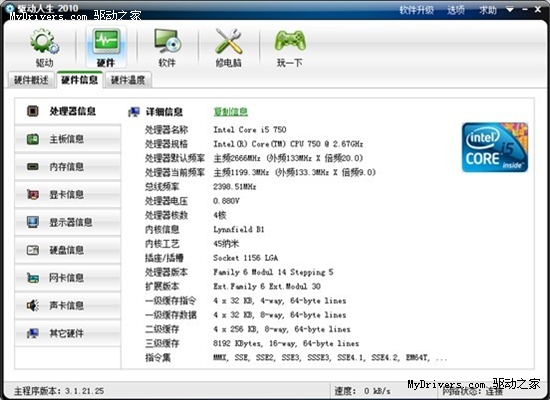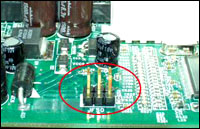使用
使用webuploader分成简单直选要引入
<!--引入CSS--><link rel="stylesheet" type="text/css" href="webuploader文件夹/webuploader.css"><!--引入JS--><script type="text/javascript" src="webuploader文件夹/webuploader.js"></script>
HTML部分
<div id="uploader" class="wu-example"> <!--用来存放文件信息--> <div id="thelist" class="uploader-list"></div> <div class="btns"> <div id="picker">选择文件</div> <button id="ctlBtn" class="btn btn-default">开始上传 </button> </div> </div>
初始化Web Uploader
jQuery(function() { $list = $('#thelist'), $btn = $('#ctlBtn'), state = 'pending', uploader; uploader = WebUploader.create({ // 不压缩image resize: false, // swf文件路径 swf: 'uploader.swf', // 文件接收服务端。 server: upload.php, // 选择文件的按钮。可选。 // 内部根据当前运行是创建,可能是input元素,也可能是flash. pick: '#picker', chunked: true, chunkSize:2*1024*1024, auto: true, accept: { title: 'Images', extensions: 'gif,jpg,jpeg,bmp,png', mimeTypes: 'image/*' } }); upload.php处理
以下是根据别人的例子自己拿来改的php 后台代码
header("Expires: Mon, 26 Jul 1997 05:00:00 GMT"); header("Last-Modified: " . gmdate("D, d M Y H:i:s") . " GMT"); header("Cache-Control: no-store, no-cache, must-revalidate"); header("Cache-Control: post-check=0, pre-check=0", false); header("Pragma: no-cache"); if ($_SERVER['REQUEST_METHOD'] == 'OPTIONS') { exit; // finish preflight CORS requests here } if ( !empty($_REQUEST[ 'debug' ]) ) { $random = rand(0, intval($_REQUEST[ 'debug' ]) ); if ( $random === 0 ) { header("HTTP/1.0 500 Internal Server Error"); exit; } } // header("HTTP/1.0 500 Internal Server Error"); // exit; // 5 minutes execution time @set_time_limit(5 * 60); // Uncomment this one to fake upload time // usleep(5000); // Settings // $targetDir = ini_get("upload_tmp_dir") . DIRECTORY_SEPARATOR . "plupload"; $targetDir = 'uploads'.DIRECTORY_SEPARATOR.'file_material_tmp'; $uploadDir = 'uploads'.DIRECTORY_SEPARATOR.'file_material'; $cleanupTargetDir = true; // Remove old files $maxFileAge = 5 * 3600; // Temp file age in seconds // Create target dir if (!file_exists($targetDir)) { @mkdir($targetDir); } // Create target dir if (!file_exists($uploadDir)) { @mkdir($uploadDir); } // Get a file name if (isset($_REQUEST["name"])) { $fileName = $_REQUEST["name"]; } elseif (!empty($_FILES)) { $fileName = $_FILES["file"]["name"]; } else { $fileName = uniqid("file_"); } $oldName = $fileName; $filePath = $targetDir . DIRECTORY_SEPARATOR . $fileName; // $uploadPath = $uploadDir . DIRECTORY_SEPARATOR . $fileName; // Chunking might be enabled $chunk = isset($_REQUEST["chunk"]) ? intval($_REQUEST["chunk"]) : 0; $chunks = isset($_REQUEST["chunks"]) ? intval($_REQUEST["chunks"]) : 1; // Remove old temp files if ($cleanupTargetDir) { if (!is_dir($targetDir) || !$dir = opendir($targetDir)) { die('{"jsonrpc" : "2.0", "error" : {"code": 100, "message": "Failed to open temp directory."}, "id" : "id"}'); } while (($file = readdir($dir)) !== false) { $tmpfilePath = $targetDir . DIRECTORY_SEPARATOR . $file; // If temp file is current file proceed to the next if ($tmpfilePath == "{$filePath}_{$chunk}.part" || $tmpfilePath == "{$filePath}_{$chunk}.parttmp") { continue; } // Remove temp file if it is older than the max age and is not the current file if (preg_match('//.(part|parttmp)$/', $file) && (@filemtime($tmpfilePath) < time() - $maxFileAge)) { @unlink($tmpfilePath); } } closedir($dir); } // Open temp file if (!$out = @fopen("{$filePath}_{$chunk}.parttmp", "wb")) { die('{"jsonrpc" : "2.0", "error" : {"code": 102, "message": "Failed to open output stream."}, "id" : "id"}'); } if (!empty($_FILES)) { if ($_FILES["file"]["error"] || !is_uploaded_file($_FILES["file"]["tmp_name"])) { die('{"jsonrpc" : "2.0", "error" : {"code": 103, "message": "Failed to move uploaded file."}, "id" : "id"}'); } // Read binary input stream and append it to temp file if (!$in = @fopen($_FILES["file"]["tmp_name"], "rb")) { die('{"jsonrpc" : "2.0", "error" : {"code": 101, "message": "Failed to open input stream."}, "id" : "id"}'); } } else { if (!$in = @fopen("php://input", "rb")) { die('{"jsonrpc" : "2.0", "error" : {"code": 101, "message": "Failed to open input stream."}, "id" : "id"}'); } } while ($buff = fread($in, 4096)) { fwrite($out, $buff); } @fclose($out); @fclose($in); rename("{$filePath}_{$chunk}.parttmp", "{$filePath}_{$chunk}.part"); $index = 0; $done = true; for( $index = 0; $index < $chunks; $index++ ) { if ( !file_exists("{$filePath}_{$index}.part") ) { $done = false; break; } } if ( $done ) { $pathInfo = pathinfo($fileName); $hashStr = substr(md5($pathInfo['basename']),8,16); $hashName = time() . $hashStr . '.' .$pathInfo['extension']; $uploadPath = $uploadDir . DIRECTORY_SEPARATOR .$hashName; if (!$out = @fopen($uploadPath, "wb")) { die('{"jsonrpc" : "2.0", "error" : {"code": 102, "message": "Failed to open output stream."}, "id" : "id"}'); } if ( flock($out, LOCK_EX) ) { for( $index = 0; $index < $chunks; $index++ ) { if (!$in = @fopen("{$filePath}_{$index}.part", "rb")) { break; } while ($buff = fread($in, 4096)) { fwrite($out, $buff); } @fclose($in); @unlink("{$filePath}_{$index}.part"); } flock($out, LOCK_UN); } @fclose($out); $response = [ 'success'=>true, 'oldName'=>$oldName, 'filePaht'=>$uploadPath, 'fileSize'=>$data['size'], 'fileSuffixes'=>$pathInfo['extension'], 'file_id'=>$data['id'], ]; die(json_encode($response)); } // Return Success JSON-RPC response die('{"jsonrpc" : "2.0", "result" : null, "id" : "id"}'); 以上就是本文的全部内容,希望对大家的学习有所帮助。















